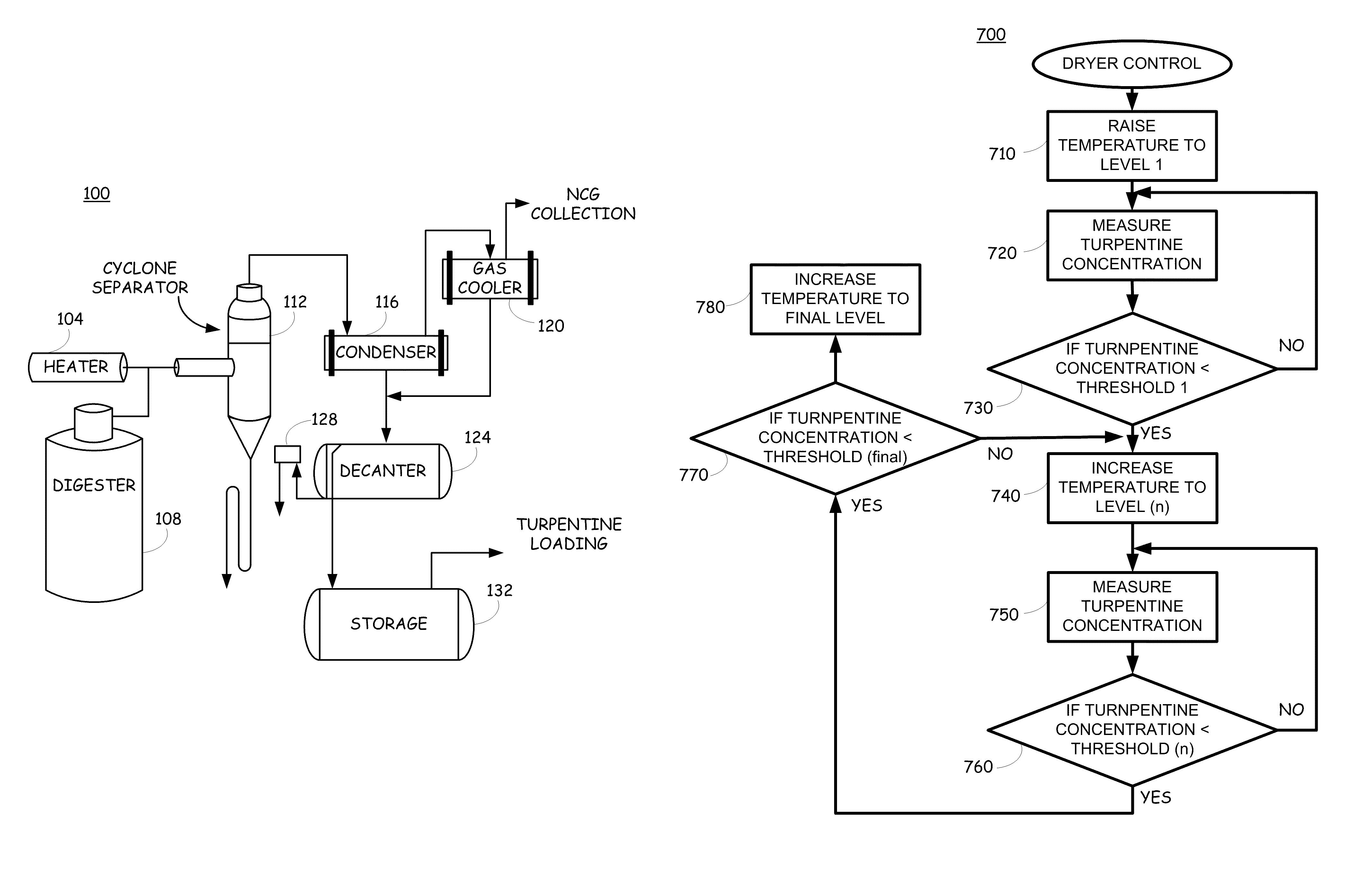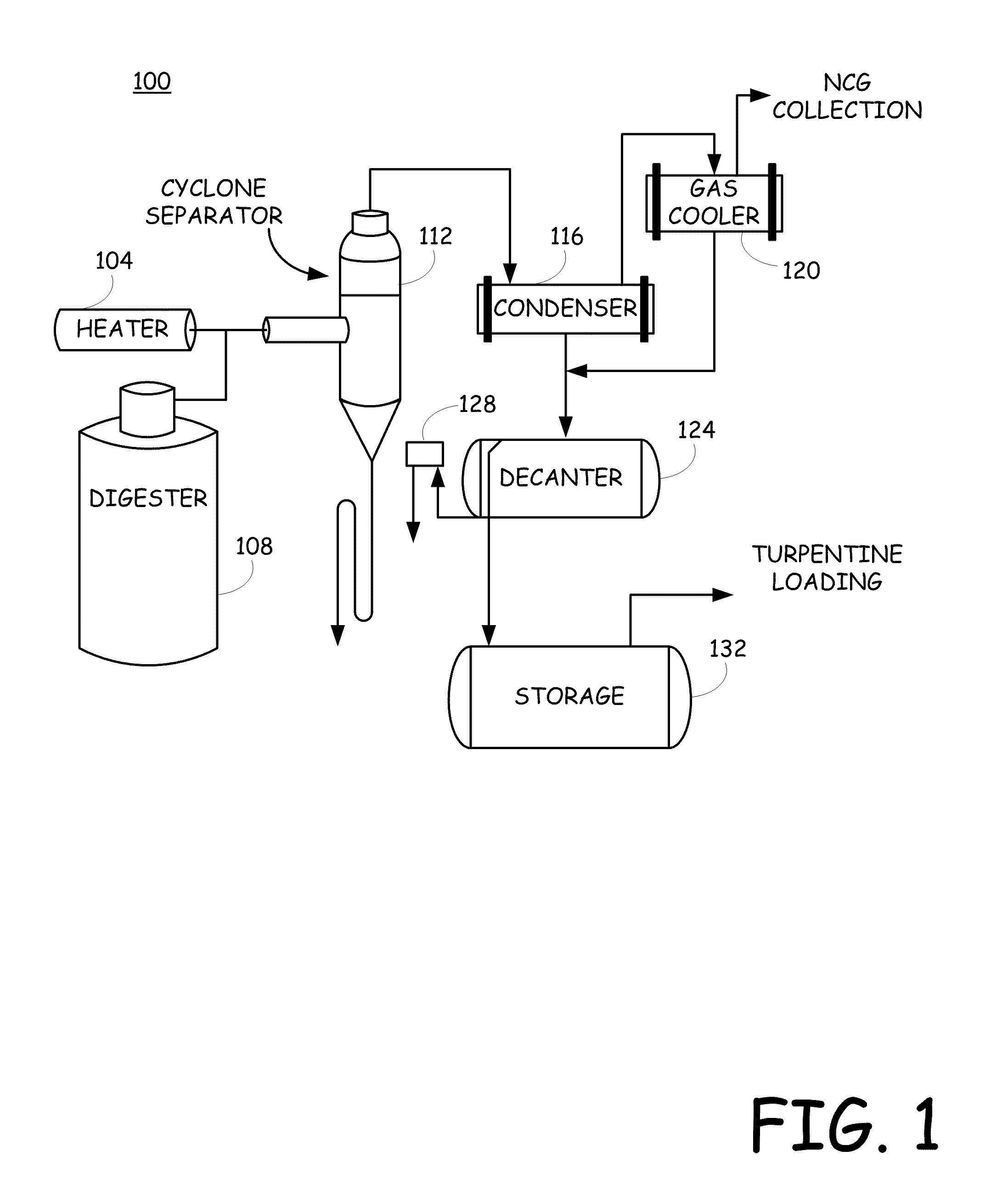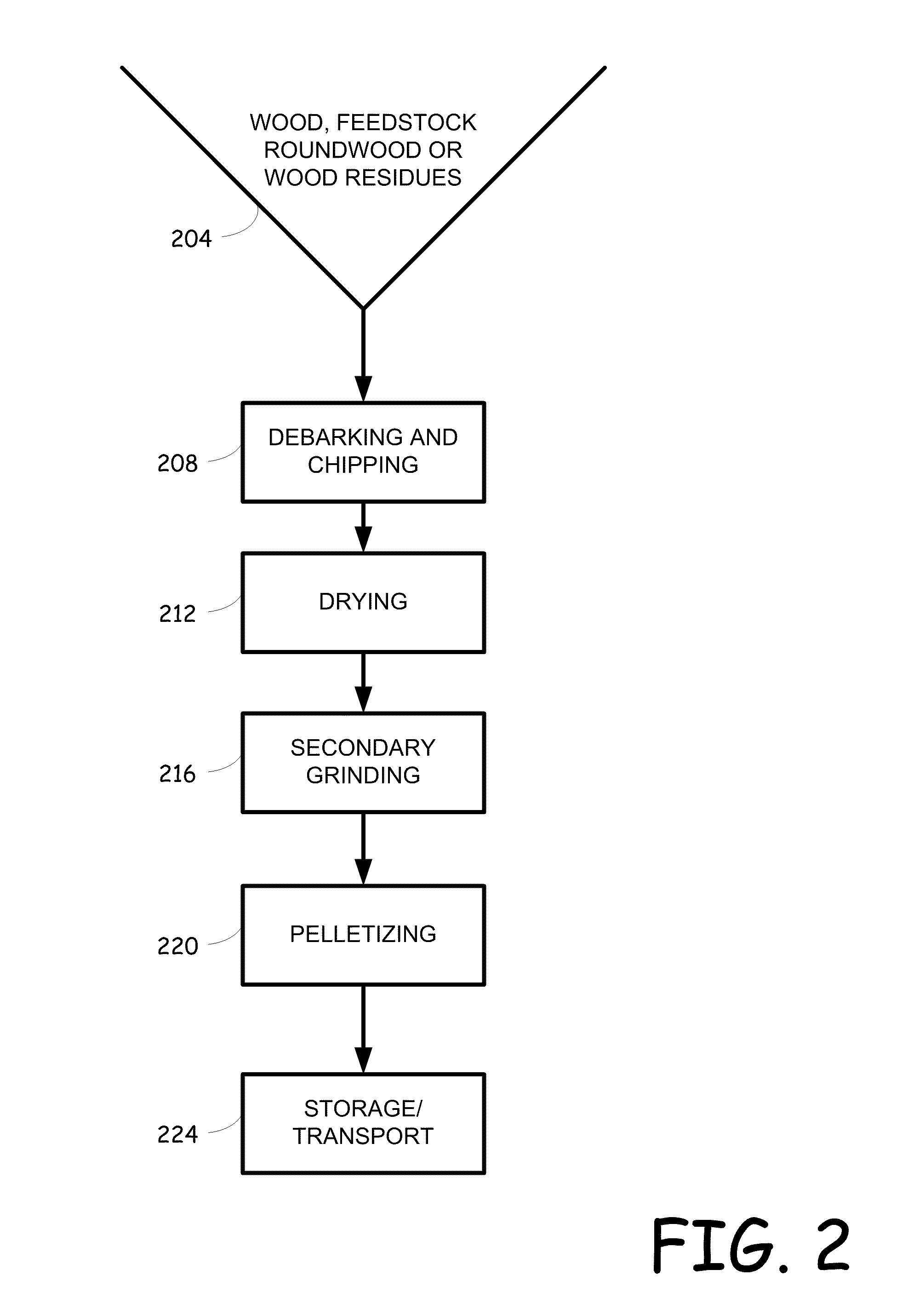System and method for recovering turpentine during wood material processing
a wood material and recovery system technology, applied in biofeedstock, biodivided material pretreatment, combination process drying, etc., can solve the problems of fine dust (particulate matter), PM2.5 emissions of older pellet stoves and boilers, and common, and achieve the effect of reducing capital and operation costs
- Summary
- Abstract
- Description
- Claims
- Application Information
AI Technical Summary
Benefits of technology
Problems solved by technology
Method used
Image
Examples
example
[0065]Dw=62.4 lb / ft3=8.33 lbs / gallon[0066]Dt=53.8 lb / ft3=7.2 lbs / gallon[0067]X=0.5 ft.[0068]Pd=0.25 psi=36 lb / ft2 [0069]Ps=0.01 psi=1.44 lb / ft2 [0070]T=7.6 ft.
[0071]Based on these parameters, the following table shows the turpentine overflow back pressure in view of the under flow resistance:
[0072]
UnderflowFlow Resistance(Ps)00.010.1Turpentine overflowCalculatedback pressure (Pd)Turpentine Depth (ft)−0.5−4.75−4.9−6.4−0.25−0.6−0.7203.63.510.30.257.87.618.7.511.911.827
[0073]In most systems, the backpressure on the turpentine overflow is close to 0 as is the underflow (water) dynamic friction loss if the lines are sized correctly. In such cases the interface location can be simplified to:
T=X*Dw / (DW−Dt) (6)
[0074]In this case the depth of the turpentine bed increases by a factor of 7.3 inches for every inch of underflow level change. Therefore if the underflow level is adjustable, the minimum to maximum control span should be less than about three (3) inches (7.6 cm).
[0075]Most turpenti...
PUM
| Property | Measurement | Unit |
|---|---|---|
| temperature | aaaaa | aaaaa |
| temperature | aaaaa | aaaaa |
| combustion efficiency | aaaaa | aaaaa |
Abstract
Description
Claims
Application Information
 Login to View More
Login to View More - R&D
- Intellectual Property
- Life Sciences
- Materials
- Tech Scout
- Unparalleled Data Quality
- Higher Quality Content
- 60% Fewer Hallucinations
Browse by: Latest US Patents, China's latest patents, Technical Efficacy Thesaurus, Application Domain, Technology Topic, Popular Technical Reports.
© 2025 PatSnap. All rights reserved.Legal|Privacy policy|Modern Slavery Act Transparency Statement|Sitemap|About US| Contact US: help@patsnap.com



